
How to Use BMP180: Examples, Pinouts, and Specs
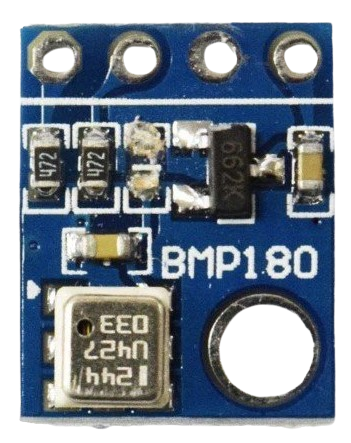
 Design with BMP180 in Cirkit Designer
Design with BMP180 in Cirkit DesignerIntroduction
The BMP180 is a digital barometric pressure sensor designed to measure atmospheric pressure and temperature with high precision. It is widely used in applications such as weather stations, altimeters, and mobile devices to provide accurate altitude and environmental data. The sensor communicates via the I2C protocol, making it easy to interface with microcontrollers like Arduino and Raspberry Pi.
Explore Projects Built with BMP180
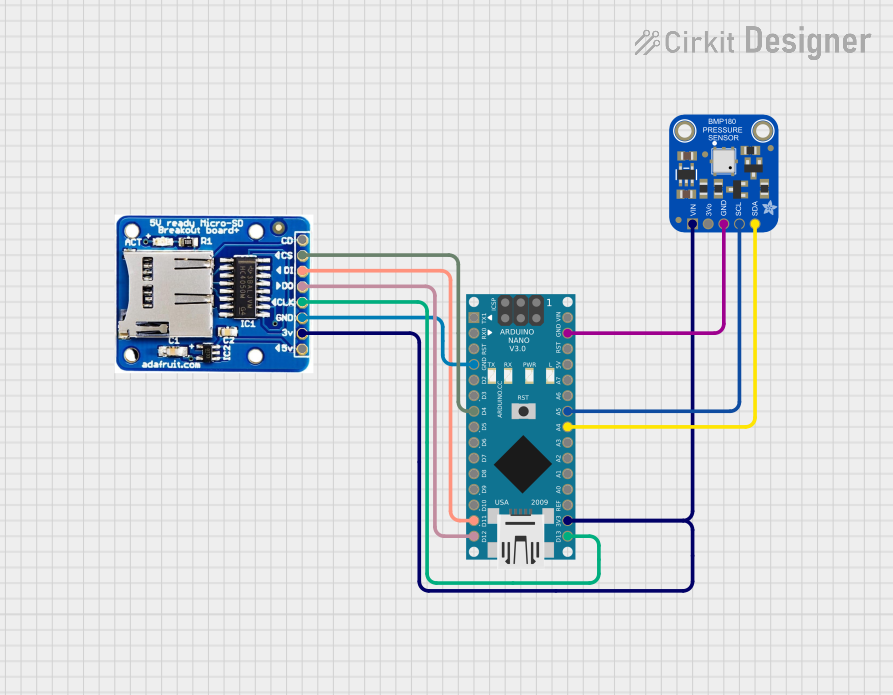
 Open Project in Cirkit Designer
Open Project in Cirkit Designer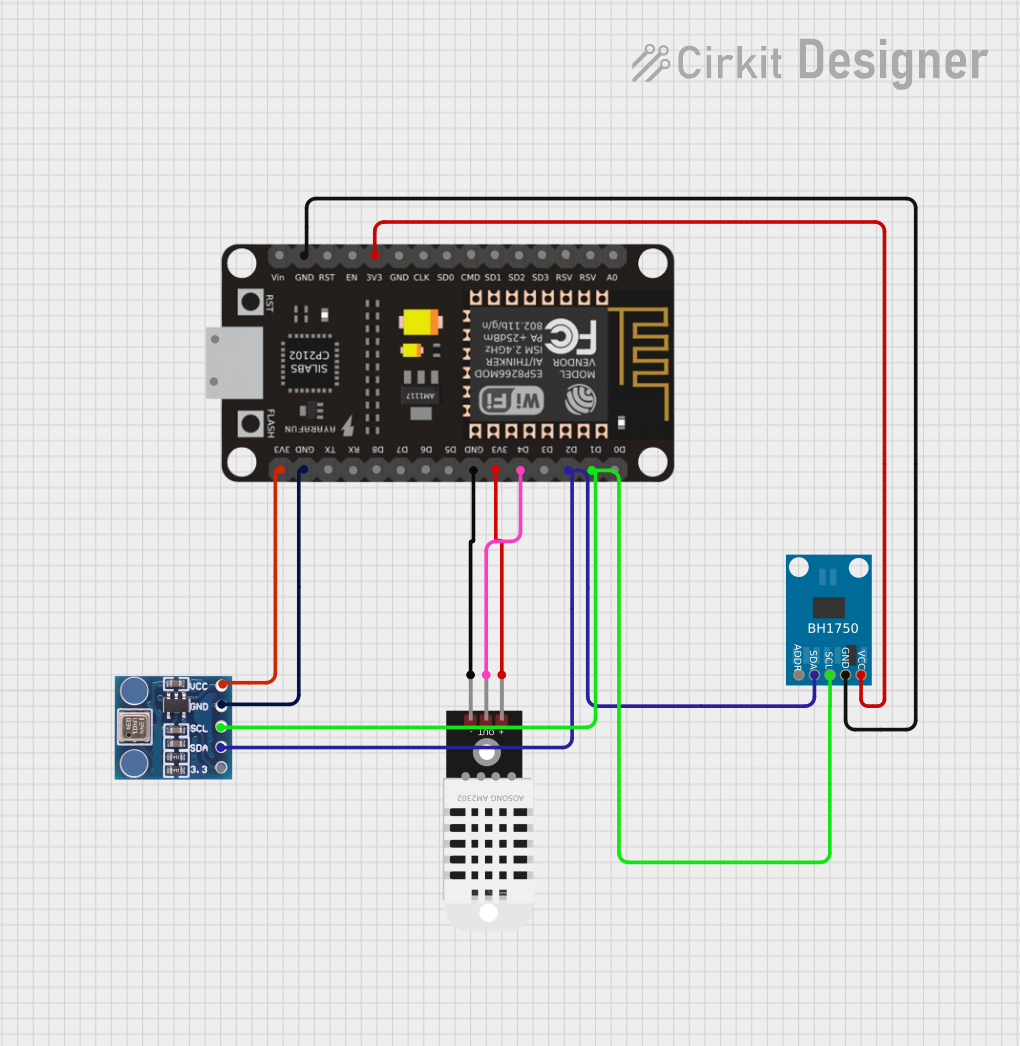
 Open Project in Cirkit Designer
Open Project in Cirkit Designer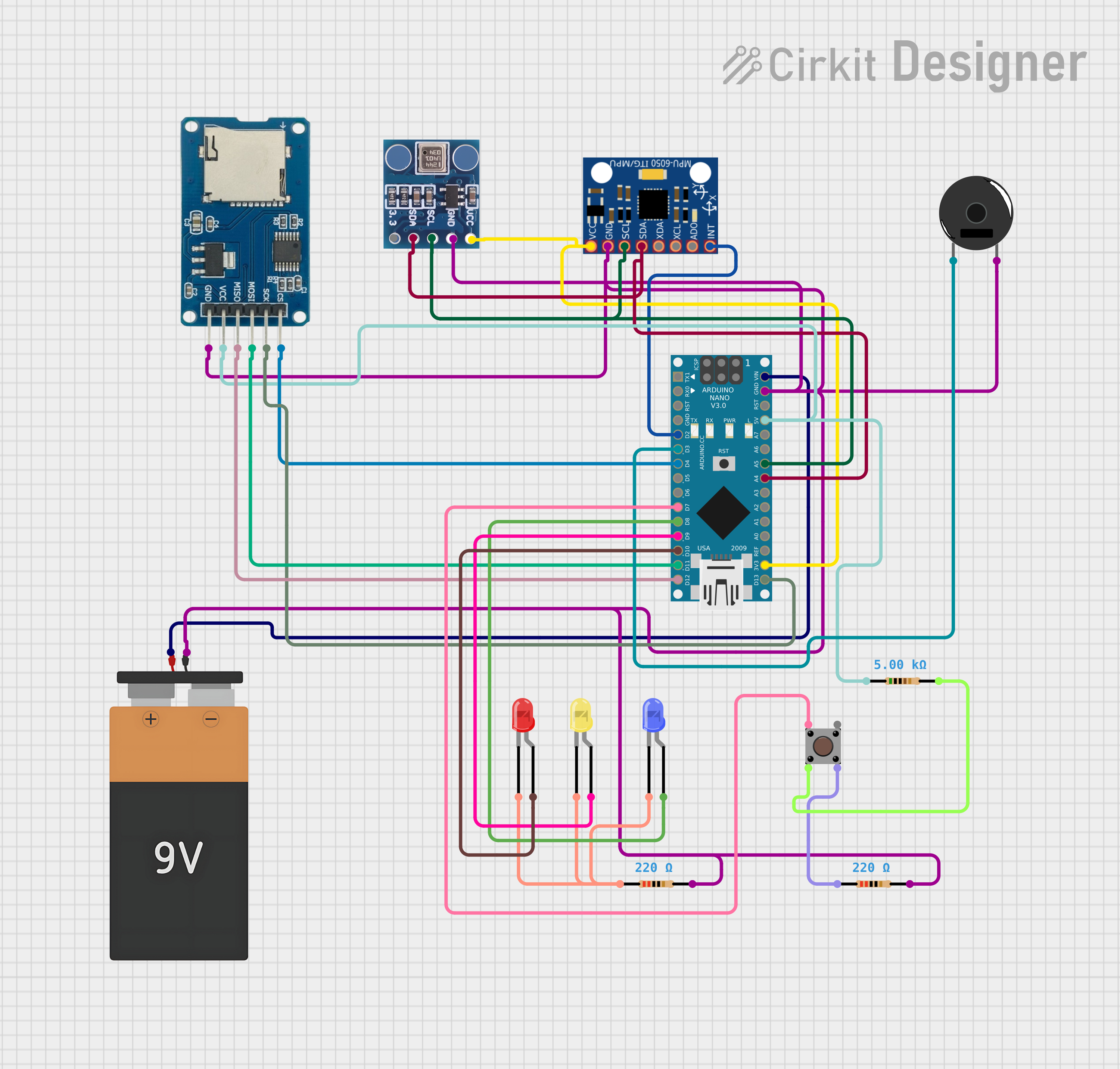
 Open Project in Cirkit Designer
Open Project in Cirkit Designer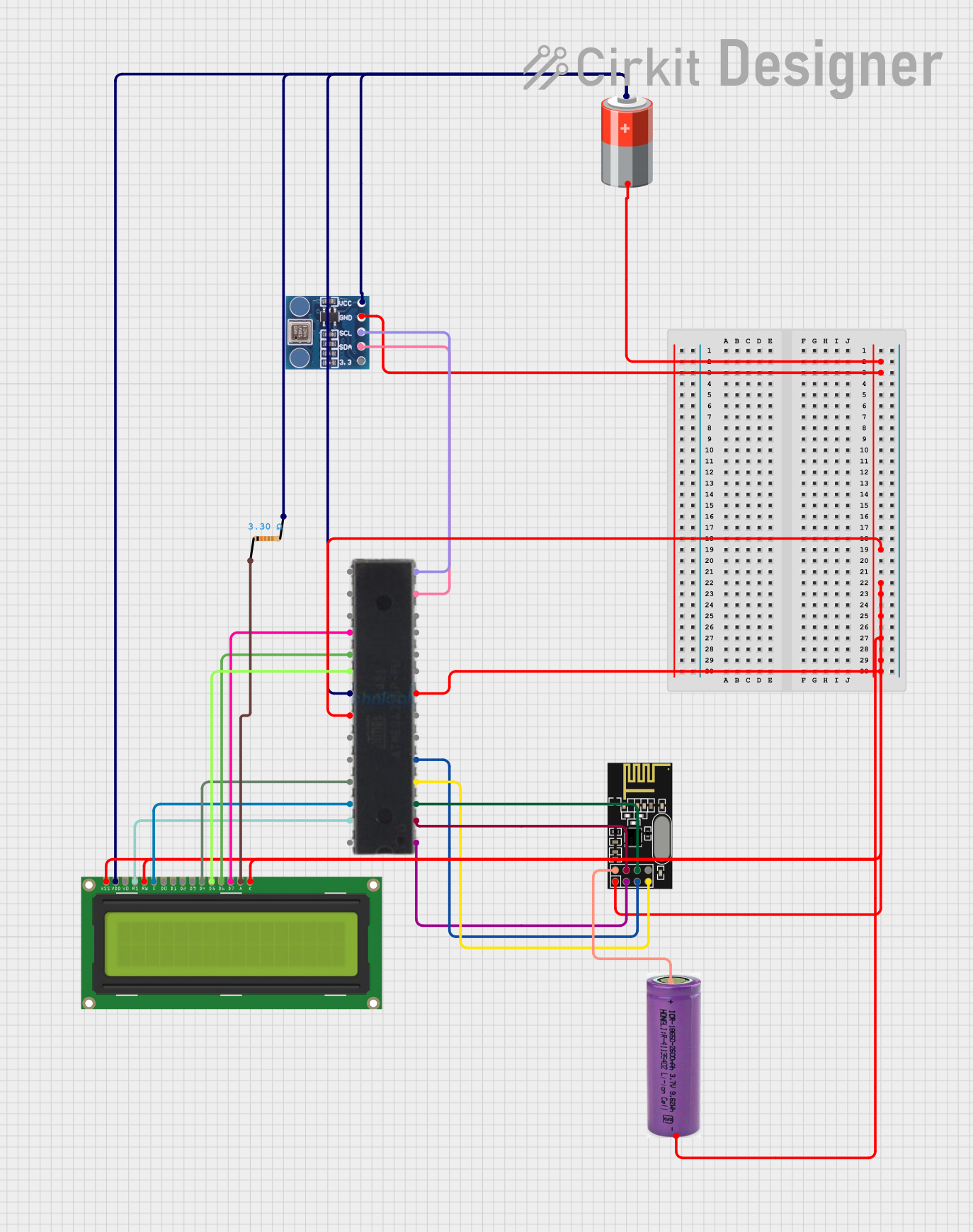
 Open Project in Cirkit Designer
Open Project in Cirkit DesignerExplore Projects Built with BMP180

 Open Project in Cirkit Designer
Open Project in Cirkit Designer
 Open Project in Cirkit Designer
Open Project in Cirkit Designer
 Open Project in Cirkit Designer
Open Project in Cirkit Designer
 Open Project in Cirkit Designer
Open Project in Cirkit DesignerCommon Applications
- Weather monitoring systems
- Altitude measurement in drones and aircraft
- Mobile devices for environmental sensing
- GPS navigation systems for altitude correction
- Scientific experiments requiring pressure and temperature data
Technical Specifications
The BMP180 is a compact and efficient sensor with the following key specifications:
| Parameter | Value |
|---|---|
| Operating Voltage | 1.8V to 3.6V |
| Typical Operating Voltage | 3.3V |
| Pressure Range | 300 hPa to 1100 hPa |
| Temperature Range | -40°C to +85°C |
| Pressure Resolution | 0.01 hPa |
| Temperature Resolution | 0.1°C |
| Communication Protocol | I2C |
| I2C Address | 0x77 (default) |
| Power Consumption | 12 µA (typical in ultra-low power mode) |
Pin Configuration
The BMP180 sensor typically comes in a breakout board with the following pinout:
| Pin Name | Description |
|---|---|
| VIN | Power supply input (3.3V or 5V) |
| GND | Ground |
| SCL | I2C clock line |
| SDA | I2C data line |
Usage Instructions
Connecting the BMP180 to an Arduino UNO
To use the BMP180 with an Arduino UNO, follow these steps:
- Connect the VIN pin of the BMP180 to the 5V pin on the Arduino.
- Connect the GND pin of the BMP180 to the GND pin on the Arduino.
- Connect the SCL pin of the BMP180 to the A5 pin on the Arduino (I2C clock line).
- Connect the SDA pin of the BMP180 to the A4 pin on the Arduino (I2C data line).
Arduino Code Example
Below is an example Arduino sketch to read pressure and temperature data from the BMP180 using the Adafruit BMP085/BMP180 library.
#include <Wire.h>
#include <Adafruit_Sensor.h>
#include <Adafruit_BMP085_U.h>
// Create an instance of the BMP180 sensor
Adafruit_BMP085_Unified bmp = Adafruit_BMP085_Unified(10085);
void setup() {
Serial.begin(9600);
// Initialize the BMP180 sensor
if (!bmp.begin()) {
Serial.println("Could not find a valid BMP180 sensor, check wiring!");
while (1); // Halt the program if the sensor is not detected
}
}
void loop() {
sensors_event_t event;
bmp.getEvent(&event);
if (event.pressure) {
// Print pressure in hPa
Serial.print("Pressure: ");
Serial.print(event.pressure);
Serial.println(" hPa");
// Calculate and print altitude (assuming sea level pressure = 1013.25 hPa)
float seaLevelPressure = 1013.25;
Serial.print("Altitude: ");
Serial.print(bmp.pressureToAltitude(seaLevelPressure, event.pressure));
Serial.println(" m");
// Get and print temperature
float temperature;
bmp.getTemperature(&temperature);
Serial.print("Temperature: ");
Serial.print(temperature);
Serial.println(" °C");
}
delay(2000); // Wait 2 seconds before the next reading
}
Important Considerations
- Ensure proper pull-up resistors (typically 4.7kΩ) are connected to the SCL and SDA lines if they are not already included on the breakout board.
- The BMP180 operates at 3.3V logic levels. If using a 5V microcontroller, ensure the breakout board includes level-shifting circuitry.
- Avoid exposing the sensor to extreme environmental conditions (e.g., high humidity or dust) to maintain accuracy and longevity.
Troubleshooting and FAQs
Common Issues
The sensor is not detected by the Arduino.
- Check the wiring and ensure the SCL and SDA lines are correctly connected.
- Verify that the I2C address (default: 0x77) matches the one used in the code.
- Ensure the BMP180 is powered correctly (3.3V or 5V).
Incorrect or fluctuating pressure/temperature readings.
- Verify that the sensor is not exposed to rapid temperature changes or vibrations.
- Check for proper pull-up resistors on the I2C lines.
Altitude readings are inaccurate.
- Ensure the correct sea level pressure is used in the altitude calculation. The default value (1013.25 hPa) may need adjustment based on local weather conditions.
Tips for Troubleshooting
- Use an I2C scanner sketch to confirm the BMP180's address on the I2C bus.
- Test the sensor with a different microcontroller or library to rule out software issues.
- Inspect the solder joints and connections for any loose or damaged wires.
By following this documentation, you should be able to successfully integrate and use the BMP180 sensor in your projects!